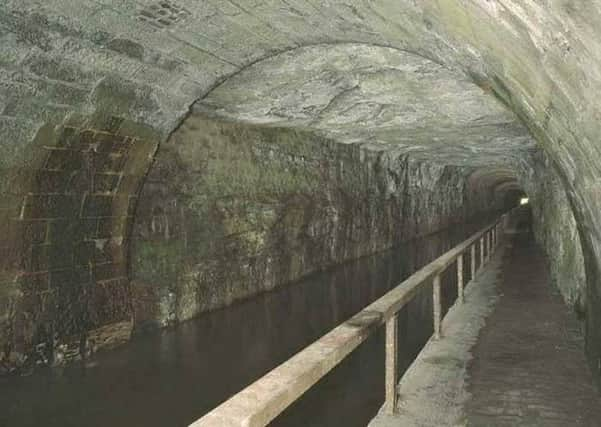A marvel of 19th century civil engineering


With a few exceptions the articles have covered different topics, confirming that that our community has a very rich and varied history.
Apart from my contribution there are always items in the paper reflecting some aspect of our past and last week was no different. A new scary walk was advertised offering brave bairns a guided walk through what we used to call the ‘Dark Tunnel’ on the Union Canal.
Advertisement
Hide AdAdvertisement
Hide AdI hope the idea is a success because as well as having fun the visitors will learn about one of the most famous works of 19th century civil engineering.
In 1813 the engineer Hugh Baird produced a plan for a waterway between Edinburgh and Falkirk, but the proposed route upset the formidable William Forbes of Callendar House, Falkirk’s richest and most powerful landowner. He was annoyed that the canal would pass quite close to the house and that the passengers would be able to gaze down into his private gardens. He kicked up such a row, and enlisted the support of so many powerful friends, that the planners were forced to devise a new route which would take the canal away from the house and park.
Unfortunately the great bulk of Prospect Hill stood in the way and the only choice was to cut a tunnel 690 yards long through the solid rock. Hugh Baird believed that the canal needed to be at least 13 feet wide with another five for the footpath and that the tunnel must be at least 18 feet from the roof to the bottom of the water.
This huge cavernous passage was to be cut through using only simple tools and primitive explosives by a very large contingent of ‘navvies’ many of whom were recent immigrants from Ireland.
Advertisement
Hide AdAdvertisement
Hide AdFive years after Baird first presented his plan, and with William Forbes already dead and gone, the work began.
A number of vertical pits were dug from the top of the hill down to the level of the waterway and the material lifted up using windlasses. The ‘navvies’ then drove the tunnel back and forward to meet the next pit and so on until the passage was complete.
It is to their credit that it is as straight as a die and that the first thing you see on entering the tunnel is the light shining through the exit nearly half a mile away.
There is a famous letter sent from Falkirk to New York at the time which finishes with “a great deal of Irish men came over and is employed at it and several accidents has happened at it and two was killed by the face of the brae falling down on them ... few of our countrymen is at it as in general they cannot stand the work”.
Advertisement
Hide AdAdvertisement
Hide AdWhen the canal was completed in 1822 the trip through the gloomy passage became one of the highlights for the thousands of travellers who passed through.
Back in the 1950s we used to dare one another to walk through the tunnel which had no lights and a broken handrail. The water from the roof and the creepy light and sound made it a dare indeed though most of us gave it a go!
Today there is a new handrail and lighting but it is still quite an experience.
As you walk along in the gloom spare a thought for those young men far from home whose backbreaking efforts helped create this wonder of the industrial age.